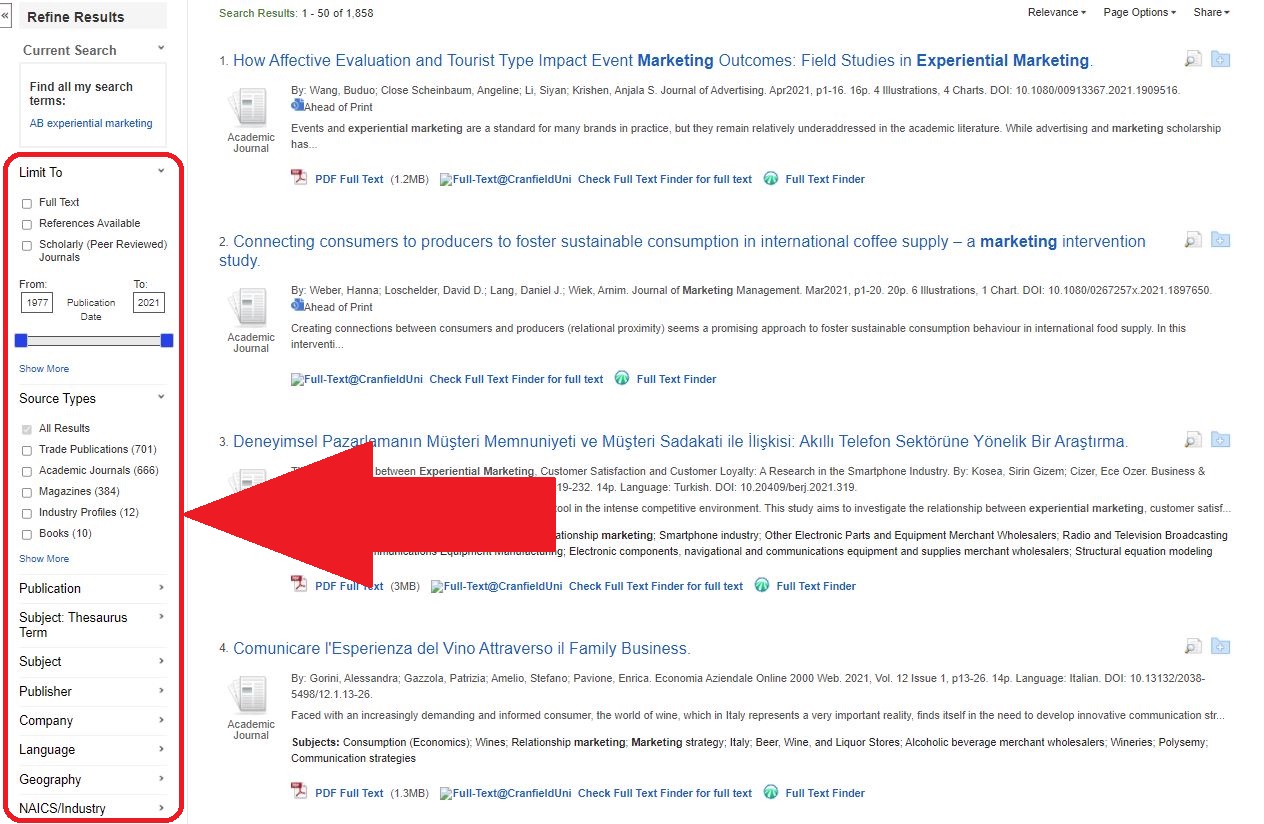Journal searching tips
10/06/2021

Searching for journal articles can seem a little daunting at the beginning. Here are some of our top tips to get you started when searching for articles in any of our key business journal collections, e.g. EBSCO Business Source Complete, ProQuest One Business or Emerald
- Use quotation marks around words to search for them as phrases, e.g. “social media”.
- Use the wildcard symbol (?) to search for multiple spellings of a word, e.g. organi?ation will find both the US and English spellings of word.
- Use the truncation symbol (*) to search for different word endings, e.g. strateg* will find strategies, strategy, strategic etc.
- Use the drop-down field selector options (adjacent to the search box) to search for your keywords in the ‘abstract’ of articles. This will narrow down the results found.
- Where you have a group of alternative terms for the same concept, enter them all in the same search box, using the OR operator between them to indicate that they are interchangeable, e.g. CSR OR “corporate social responsibility” OR “corporate responsibility” OR …
- Refine your results using the limiters available in databases, e.g. by ‘date published’ or limit your search to ‘scholarly (peer reviewed) journals’ only. Here’s where you’ll find most of the limiters on EBSCO:

- No full text available? Click on one of the ‘Full Text Finder’ options to check if the full text is available in one of our other subscription databases.
- Don’t forget to evaluate your results and, if necessary, refine your search.
- Need help or have any questions about journal searching? Please come and ask us.
This isn’t meant to be an exhaustive list, so please leave a comment if you have any more tips you would like to share!
If you have any questions on searching for academic literature in business and management, please contact the School of Management Library.
Feature image from Pixabay. Available at: https://pixabay.com/photos/student-typing-keyboard-text-woman-849824/
Categories & Tags:
Leave a comment on this post:
You might also like…
Keren Tuv: My Cranfield experience studying Renewable Energy
Hello, my name is Keren, I am from London, UK, and I am studying Renewable Energy MSc. My journey to discovering Cranfield University began when I first decided to return to academia to pursue ...
3D Metal Manufacturing in space: A look into the future
David Rico Sierra, Research Fellow in Additive Manufacturing, was recently involved in an exciting project to manufacture parts using 3D printers in space. Here he reflects on his time working with Airbus in Toulouse… ...
A Legacy of Courage: From India to Britain, Three Generations Find Their Home
My story begins with my grandfather, who plucked up the courage to travel aboard at the age of 22 and start a new life in the UK. I don’t think he would have thought that ...
Cranfield to JLR: mastering mechatronics for a dream career
My name is Jerin Tom, and in 2023 I graduated from Cranfield with an MSc in Automotive Mechatronics. Originally from India, I've always been fascinated by the world of automobiles. Why Cranfield and the ...
Bringing the vision of advanced air mobility closer to reality
Experts at Cranfield University led by Professor Antonios Tsourdos, Head of the Autonomous and Cyber-Physical Systems Centre, are part of the Air Mobility Ecosystem Consortium (AMEC), which aims to demonstrate the commercial and operational ...
Using grey literature in your research: A short guide
As you research and write your thesis, you might come across, or be looking for, ‘grey literature’. This is quite simply material that is either unpublished, or published but not in a commercial form. Types ...






